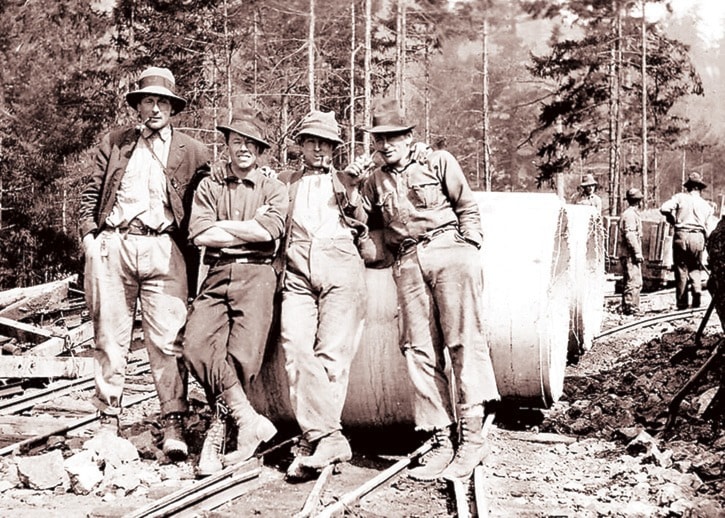In a dusty, massive chest in the basement of a home in Tacoma, Wash., retired University of Victoria psychology professor Charles Tolman found a key.
Not a real, physical key, mind you. A metaphorical one. It was the key to completing the puzzle of the Sooke Flowline – a massive engineering feat in the early 1900s that is the foundation of how the Capital Region gets its potable water, even to this day.
He didn’t know that’s what he’d found, though.
“There were all these old photographs,” says Eric Tolman, Charles’ son, who teaches social studies at Belmont secondary and has made a film about his father’s book, Bringing Water to Victoria, recently published by the Sooke Region Museum.
Many of those photographs were of his great cousin, Harry Huston Crawford, an engineer from Missouri who worked on railroads in the early 1900s. Crawford, Eric says, needed a break from building railroads, so he took a job in a faraway town called Victoria to work on a pipeline project while he was on his way to Alaska, because he thought it sounded interesting.
It turns out Crawford was something of a documentarian. He took hundreds of photographs and made books of notes on the project. Charles took these documents, cross referenced them with source material from the time period – such as archived newspaper articles and other documents – and fleshed out the story of how the Sooke Flowline came to be.
 Curators at the Sooke Region Museum were thrilled when they discovered these pieces of our region’s history had been found, and were happy to help Charles turn his meticulous research into a book.
Curators at the Sooke Region Museum were thrilled when they discovered these pieces of our region’s history had been found, and were happy to help Charles turn his meticulous research into a book.
The decision to get Victoria’s water from Sooke Lake was driven by the fact that the Goldstream lakes were, at the time, controlled by the Esquimalt Waterworks Company (EWC). Politicians of the day determined that water should be a publicly owned resource, rather than bought and sold.
The water in Beaver and Elk lakes, piped to homes and businesses at the time, was not of a high quality and people were calling for a solution, with the population growing.
“Once Victoria decided to go to Sooke Lake (for their water), they first had to find a way to get the water from there to Victoria, obviously,” Eric says.
They had to build a concrete flowline – essentially a series of short concrete sections of tube, four or five feet wide and four feet in diameter, grouted together one by one along the length of the route.
This route was far longer than would have been ideal, as they had to go around the property owned by EWC. The engineering feat of making it run on a more or less constant decline, to allow gravity to take effect, was extremely complicated considering the crude surveying equipment of the day.
The water ended up in a reservoir, Humpback Lake – which did not exist before the project – at which point it was pumped the rest of the way to Victoria.
“It was a huge, huge undertaking,” Eric says. “The engineering feat of actually putting this thing together and turning the tap on for the first time is just an amazing story.”
The film Eric made of his father’s book, he says, was a way for them to bond on another level, around their mutual appreciation for history.
Charles’ wife passed away last summer, “and so he put his heart and soul into this thing as a distraction,” Eric says. “This film was a way for my dad and I to get together, pore over photos and explore our love of the past.”
“As far as drinking water is concerned, Victoria, British Columbia, is one of the most fortunate cities in the world,” begins Charles’ preface to the book. “Getting from the dubious sources of water available to the newly established Hudson’s Bay fort in 1843 to the secure supply that we now enjoy from Sooke Lake has taken a complex, at times tortuous and convoluted path. It is this path that is sketched in this book.”
It’s not an easy read, Eric admits. It explores not only the technical aspects of the project, but the political factors and personalities involved.
It is, however, an integral part of our region’s history and he’s happy to see it come to fruition.
Bringing Water to Victoria is available at many local booksellers, as well as the Sooke Region Museum itself. Eric’s film can be found on YouTube by searching “Bringing Water to Victoria.”
One hundred per cent of the profits from book sales go to the Sooke Region Museum.
“He did it strictly for benevolent reasons,” says Eric. “He just loves history and wants to help share it.”
The 100th anniversary of the taps coming on in Victoria happens May 28. Watch for event announcements soon.
